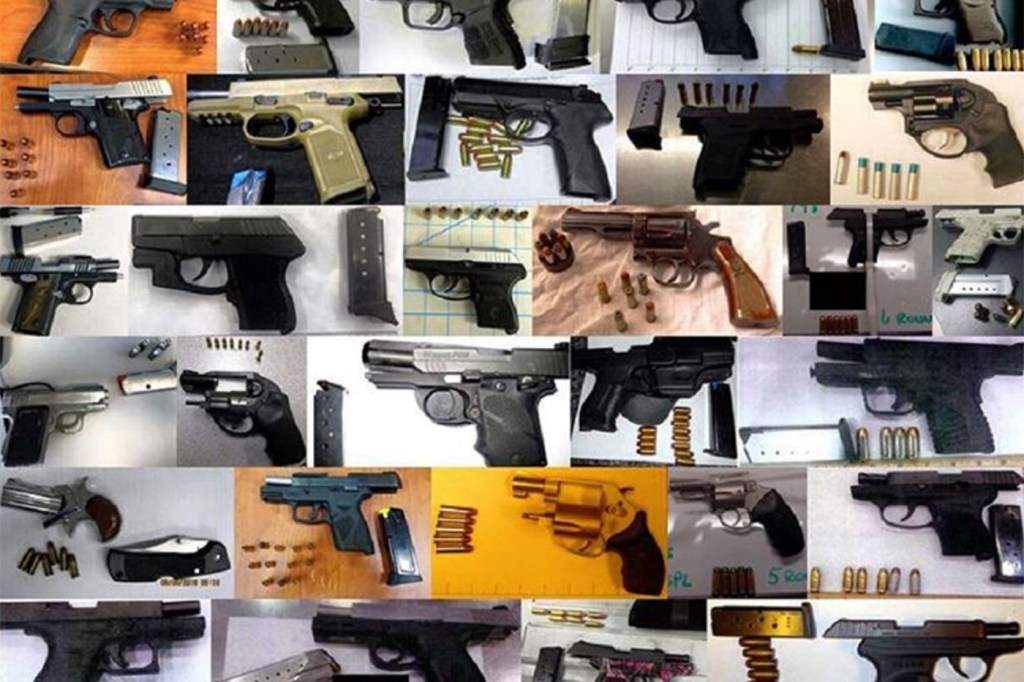3Qs: How safe are US airports?

 The Transportation Security Administration is finding more firearms than ever at airport checkpoints. Over the past decade, gun seizures have taken off, rising from 660 in 2005 to 2,653 in 2015. And the number of confiscated weapons is only expected to grow, likely topping 3,000 by the end of this year.
The Transportation Security Administration is finding more firearms than ever at airport checkpoints. Over the past decade, gun seizures have taken off, rising from 660 in 2005 to 2,653 in 2015. And the number of confiscated weapons is only expected to grow, likely topping 3,000 by the end of this year.
Is this good or bad—a sign that TSA officers are doing their jobs or an indication that more travelers are trying to board planes with these weapons in their bags? We asked Peter Boynton, the co-director of the George J. Kostas Research Institute for Homeland Security and former federal security director for Bradley International Airport.
The TSA Blog posts weekly photos of the firearms its officers confiscate from carry-on bags. How do you think the sheer number of confiscated weapons at airports should make travelers feel?
We are seeing the results of TSA’s renewed focus on its core mission, and probably also seeing more guns being carried by the public. It seems surprising, but many people with guns report that they just forgot to check and remove them before going to the airport.
When I was security director at Bradley, we found a fully fueled chainsaw in carry-on luggage. The chainsaw did not make the trip, but the passenger saw no reason why he shouldn’t be allowed to bring a chainsaw on the plane. I think this speaks a bit to our shared responsibilities to be part of a resilient, safe, and secure community.
TSA and the police play an incredibly important role in safety and security, but we all have a role in in terms of personal responsibility and awareness. That includes saying something to authorities if we see something related to security that does not seem right. And, of course, that we remove guns and chainsaws from our carry-on before heading for the airport.
An internal investigation of the TSA in 2015 found that undercover teams were able to smuggle mock explosive or banned weapons through checkpoints in 95 percent of trials. What’s the situation today?
One of many problems prior to 9/11 was the use of test ‘bombs’ that looked more like cartoon movie props, complete with curly wires and bunny-eared alarm clocks, than a real explosive device. When testing is so easy that everyone passes, then the testing is a failure and does nothing to improve security.
Today, the testing is done by insiders who know the system and exploit any vulnerability they can find. This is the right approach, to aggressively challenge the equipment and security officers, but the failure rates in these tests were unacceptable. TSA’s response—replacing screening equipment over the past two years, improving training with the premier Federal Law Enforcement Training Center, expanding efforts to encourage travelers to sign up for TSA Pre-Check, and filling staff shortages—should improve performance. But security will remain a challenge in the face of evolving terrorist threats, so the leadership, the technology, the procedures, and the security officers must continue to adapt and be alert. Continued aggressive covert testing can help insure this happens.
Although the passenger and baggage screening process is important, screening is only one of about two dozen layers of security, which include things such as hardened cockpit doors.
But the most critical security challenge facing the aviation industry—and other sectors beyond aviation—is probably the ‘insider threat.’ This is where someone who has authorized access, a badge holder or employee with access to cargo, terminals, and aircraft, comes under the influence of those who intend harm. There have been examples of ‘insiders’ who smuggle drugs or guns or take part in money laundering. It is a constant challenge to develop and maintain methods to audit and monitor the activities of those who have trusted access to guard against the insider threat.
Northeastern researchers are developing new technology that can detect suspicious behavior at airports—even when passengers are on the move. How crucial will these kinds of tech-based efforts be to preventing future terrorist attacks at airports, like those we saw in Istanbul and Brussels earlier this year?
Northeastern researchers are at the forefront of developing new technology to improve security by leading the Awareness and Localization of Explosives-Related Threats, or ALERT Center, a multi-university Department of Homeland Security Center of Excellence. There are great opportunities to apply better technology to improve security—and to do this in a manner that does not sacrifice our civil liberties.
Areas of research potential include not only better sensing and detection technology but also improved designs for airports and other transportation hubs to be more resilient to both natural disasters and evolving terrorist threats.
The research community can also support first responders and security officials by helping to develop better communication and coordination technology and protocols. When an incident occurs, rapid coordination among the many elements within an airport (or any large public venue) and rapid and effective communication and guidance to the public is critical.
This is not as easy as it may seem, requiring effective technology and coordination, and then testing and practicing use of the equipment and protocols in full-scale exercises. Doing this at major airports while they are up and running is a substantial challenge and one that the research community can do much to help.





